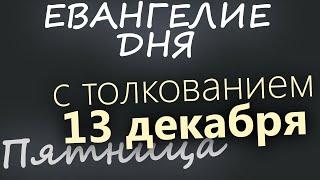
Solidity & Ethereum in React(Next JS): The Complete Guide - Update 4
Full Course(In progress): https://academy.eincode.com/courses/ultimate-ethereum-dev-course-w-solidity-react-next-js
Eincode: https://academy.eincode.com
IMPORTANT NOTE: The course is under active development. New lectures are added daily(5-8 lectures). The final size of the course should be 200+ lectures.
What is Ethereum?
Ethereum is a technology that lets you send cryptocurrency to anyone for a small fee. It also powers applications that everyone can use, and no one can take down.
It's the world's programmable blockchain.
Ethereum builds on Bitcoin's innovation, with some big differences.
Both let you use digital money without payment providers or banks. But Ethereum is programmable, so you can also use it for many different digital assets – even Bitcoin!
This also means Ethereum is for more than payments. It's a marketplace of financial services, games, and apps that can't steal your data or censor you.
What is Solidity?
Solidity is an object-oriented, high-level language for implementing smart contracts. Smart contracts are programs that govern the behavior of accounts within the Ethereum state.
Solidity is a curly-bracket language. It is influenced by C++, Python, and JavaScript, and is designed to target the Ethereum Virtual Machine (EVM). You can find more details about which languages Solidity has been inspired by in the language influences section.
Solidity is statically typed, supports inheritance, libraries, and complex user-defined types, among other features.
With Solidity, you can create contracts for uses such as voting, crowdfunding, blind auctions, and multi-signature wallets.
What is this course covering?
The course is covering everything you need to become a blockchain developer. Students of this course will learn what Ethereum blockchain is and how it works on the base level and from a developer's perspective.
Students will learn what smart contracts are and how to create them. Smarts contracts are going hand in hand with dApps(decentralized apps). The course is covering them as well.
The frontend for dApps covered in the course was used React library and Next JS framework. CSS and design are built with the help of Bulma and Tailwind frameworks.
Two real-world applications are created in the course. Every part of application creation is well explained and documented.
Faucet application:
The first application of the course. Students will learn the basics and core knowledge of the Ethereum network by working on practical applications.
The front end of the application is built with React library and Bulma framework, for smart contract creation was used Truffle development environment and Ganache(private blockchain).
Faucet application will enable users to donate and withdraw funds from the smart contract. Users will interact with a smart contract through the website connected to the blockchain network through the Metamask wallet.
The purpose of the first application is to cover the basics while having fun working on something practical.
The most important questions this application is answering are:
what is Ethereum (transactions, blockchain)
what is EVM (bytecode, storage)
how to create smart contracts and dapps
how to integrate smart contracts with React
Marketplace application:
This application is covering the creation of an interactive marketplace. Clients of this application will purchase courses(students can choose products of their choice) with Ether digital currency.
With all of the basics covered in the previous application, the focus will be on the practical development part of the Ethereum network. Topics will be more challenging, and lectures will be more practical code-wise.
The second application covers tons of features as few, for example, the marketplace page with real-time updates of Ether currency and course prices compared to the US dollar.
The modal window is dedicated to making orders. Email hashing solution to maintain client's privacy. Order view with order filtering and pagination, and many others.
This application will be built in the Next JS framework with Tailwind as the CSS framework. Next JS is internally using React library. It's straightforward to use and offers SSR(server-side rendering) by default.
SSR offers lots of benefits but also brings few problems in terms of integration with the blockchain.
The entire integration part of Next JS with blockchain is covered, well explained, and documented. The final application will be deployed on the internet. The smart contract will be deployed to the "live" mainet network.
The most mentionable topics covered in this application are:
Next js(SSR) Integration with Web3 and Blockchain
Creation of more complicated Smart Contract
Email hashing and order verification feature
Testing solution (tests will cover every feature of the smart contract)
Pagination and Filtering of orders
Eincode: https://academy.eincode.com
IMPORTANT NOTE: The course is under active development. New lectures are added daily(5-8 lectures). The final size of the course should be 200+ lectures.
What is Ethereum?
Ethereum is a technology that lets you send cryptocurrency to anyone for a small fee. It also powers applications that everyone can use, and no one can take down.
It's the world's programmable blockchain.
Ethereum builds on Bitcoin's innovation, with some big differences.
Both let you use digital money without payment providers or banks. But Ethereum is programmable, so you can also use it for many different digital assets – even Bitcoin!
This also means Ethereum is for more than payments. It's a marketplace of financial services, games, and apps that can't steal your data or censor you.
What is Solidity?
Solidity is an object-oriented, high-level language for implementing smart contracts. Smart contracts are programs that govern the behavior of accounts within the Ethereum state.
Solidity is a curly-bracket language. It is influenced by C++, Python, and JavaScript, and is designed to target the Ethereum Virtual Machine (EVM). You can find more details about which languages Solidity has been inspired by in the language influences section.
Solidity is statically typed, supports inheritance, libraries, and complex user-defined types, among other features.
With Solidity, you can create contracts for uses such as voting, crowdfunding, blind auctions, and multi-signature wallets.
What is this course covering?
The course is covering everything you need to become a blockchain developer. Students of this course will learn what Ethereum blockchain is and how it works on the base level and from a developer's perspective.
Students will learn what smart contracts are and how to create them. Smarts contracts are going hand in hand with dApps(decentralized apps). The course is covering them as well.
The frontend for dApps covered in the course was used React library and Next JS framework. CSS and design are built with the help of Bulma and Tailwind frameworks.
Two real-world applications are created in the course. Every part of application creation is well explained and documented.
Faucet application:
The first application of the course. Students will learn the basics and core knowledge of the Ethereum network by working on practical applications.
The front end of the application is built with React library and Bulma framework, for smart contract creation was used Truffle development environment and Ganache(private blockchain).
Faucet application will enable users to donate and withdraw funds from the smart contract. Users will interact with a smart contract through the website connected to the blockchain network through the Metamask wallet.
The purpose of the first application is to cover the basics while having fun working on something practical.
The most important questions this application is answering are:
what is Ethereum (transactions, blockchain)
what is EVM (bytecode, storage)
how to create smart contracts and dapps
how to integrate smart contracts with React
Marketplace application:
This application is covering the creation of an interactive marketplace. Clients of this application will purchase courses(students can choose products of their choice) with Ether digital currency.
With all of the basics covered in the previous application, the focus will be on the practical development part of the Ethereum network. Topics will be more challenging, and lectures will be more practical code-wise.
The second application covers tons of features as few, for example, the marketplace page with real-time updates of Ether currency and course prices compared to the US dollar.
The modal window is dedicated to making orders. Email hashing solution to maintain client's privacy. Order view with order filtering and pagination, and many others.
This application will be built in the Next JS framework with Tailwind as the CSS framework. Next JS is internally using React library. It's straightforward to use and offers SSR(server-side rendering) by default.
SSR offers lots of benefits but also brings few problems in terms of integration with the blockchain.
The entire integration part of Next JS with blockchain is covered, well explained, and documented. The final application will be deployed on the internet. The smart contract will be deployed to the "live" mainet network.
The most mentionable topics covered in this application are:
Next js(SSR) Integration with Web3 and Blockchain
Creation of more complicated Smart Contract
Email hashing and order verification feature
Testing solution (tests will cover every feature of the smart contract)
Pagination and Filtering of orders
Комментарии:
УКРАЇНСЬКИЙ СТРІМ World of Tanks
Alex_D20
The Best Image Background Remover is FREE
Matthew Genser
13 декабря, Пятница. Евангелие дня 2024 с толкованием. Рождественский пост
Дух Проповеди Православие
No Bootable Device Message
Acer Support
3 ways to use Pencil Tool in Illustrator
Abi Connick
My LEGO Star Wars Collection 2019
SLM444 - SuperLegoMan444
Ryzen 9800X3D Gaming Performance Are Looking Insane!
Techfluencer


























